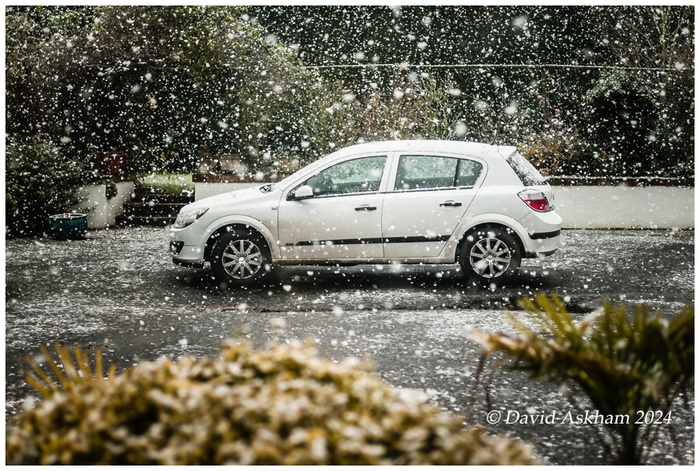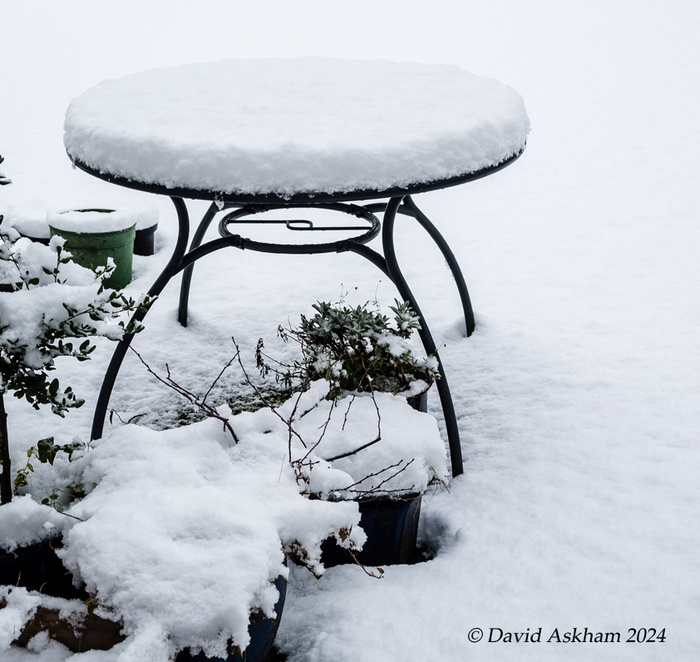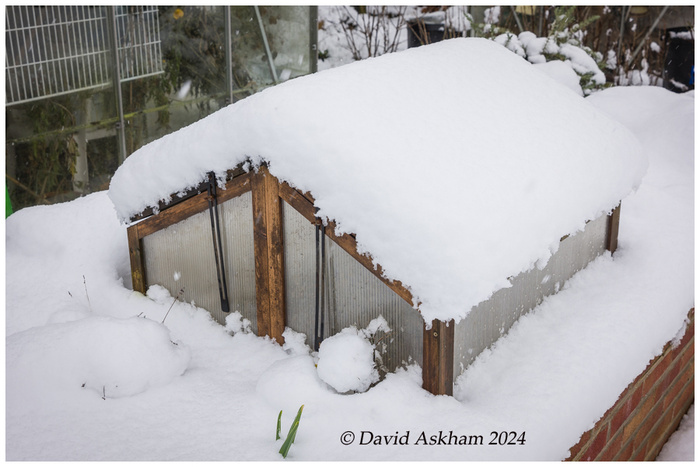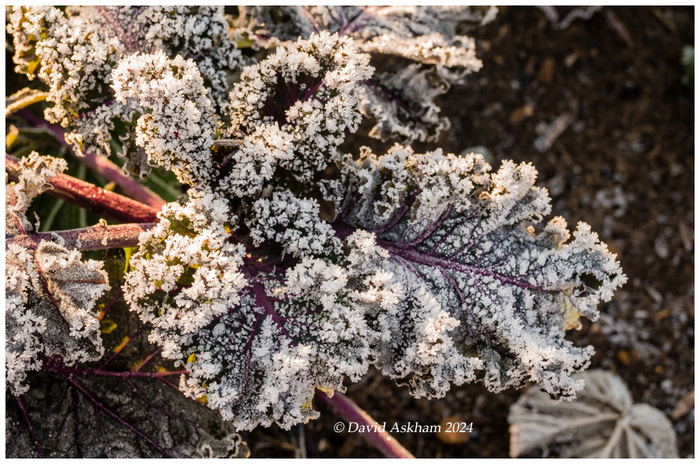Winter photography (2024)
15th January 2024
Winter Photography
[] Written & Illustrated by
David Askham

First signs of winter. (Leica M8 50 mm Summicron)
Despite global warming, we still have the same seasons, but not necessarily in the right order. Two doses of winter can confuse garden plants when they are separated by a short summer, long before spring has arrived. For the photographer there is always a climatic challenge which keeps us on our toes. Some people see winter as the time for indoor photography. For others, it is a race to the hills and mountains for landscapes of an extreme variety.

Tracks in the snow by birds and humans (Leica M8 28 mm Elmarit)
Winter photography is always challenging, with lessons waiting to be learned, or relearned. Take exposure control. A few photographic friends still adhere to the principle of reducing the risk of clipped highlights at all times, thus always tending towards underexposure. They even build a negative EV into their camera settings and only change EV when absolutely necessary. Underexposure is the opposite of that required for a predominantly white or light subject, such as a blanket of snow.
I am guided rather more by the histogram, particularly when capturing raw files. The histogram reflects the exposure of an in-camera converted Jpeg file, from where little can be retrieved from over-exposure. Raw files are very much more forgiving, which is why I never set deliberate under-exposure. With snow, always ready to deceive the exposure meter, at least one stop over-exposure is usually warranted, possibly a little more. (In manual exposure mode, adjustments to exposure are more easily made)

Tea for two? (Leica X_Vario Vario-Elmar lens at 49 mm)
Choice of subjects
Snow has a habit of concealing so much of the landscape before us that it can be quite challenging finding, and framing, suitable subjects. Ordinary objects become hidden from view, with just the changes in elevation hinting at their identity. The characteristic greens of the English landscape are the first to disappear, often merely after a modest frost.
Trees, depending on whether they are bearing their leaves or not, can look delightfully beautiful. A lot depends upon whether lack of wind and a degree of moisture allows the snow to stay in place on the branches. Wet snow sticks. In the English West Country, snow does not last very long, typically. So, regardless of excuses, it pays to get outside and capture a wintry scene while you can. I have made some interesting pictures through my windows, or partly open doorways, but I depend on the versatility of a zoom lens for framing options.

Winter protection in the garden (Leica CL standard zoom lens, 45 mm)
In unheated homes of my youth, I recall waking in the morning to the sight of ice-patterns gracing the insides of windows, formed from human breath freezing on contact with the cold glass. Some of these natural ice-pictures were quite breathtakingly beautiful, with designs only Mother Nature could create. Central heating and improved insulation have stopped this source of picture-making. But similar spectacles can still be found outside, in frozen puddles and ornamental pools of water.

Wintery landscape from the warmth of a house (Leica CL Tele-zoom lens @ 135mm (Equivalent to 200 mm full-frame)
As a keen photographer of gardens and plants, I particularly enjoy visiting the vegetable garden after a heavy frost. Winter greens, such as wrinkle-leaved chard or kale, can be transformed after a cold night.

Frosted kale leaves growing in winter (Leica X-Vario zoom lens @ 70 mm)
Winter precautions
Cold temperatures can affect not only human behaviour, but cameras and battery life as well. Dress appropriately, even for five minutes in your garden. I find open-ended mittens a good compromise for keeping my hands warm, while retaining appropriate dexterity. For a longer project outdoors in winter temperatures, remember to carry spare batteries in a warm, easily accessible pocket. Likewise, with your camera, keep it close to your body and protected when not in use.
If you are making a journey, away from home, ensure you carry a survival kit in case of being caught out by factors beyond your control. I suggest a flask of hot drink; chocolate and supplementary clothing; just in case of unforeseen delays. Whether you venture out at all, on discretionary travel, depends on your age and level of fitness.
If you have any useful tips for other photographers, please comment below and share your knowledge. Happy picture hunting!
***E N D***
Copyright © David Askham 2024